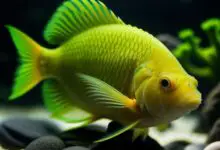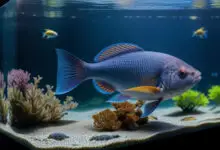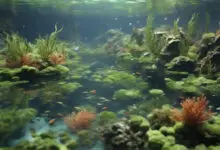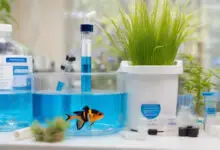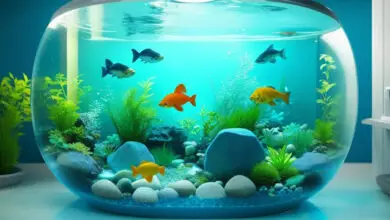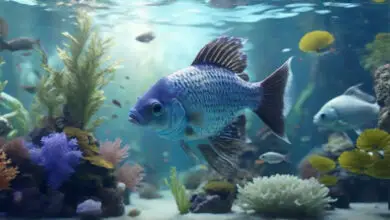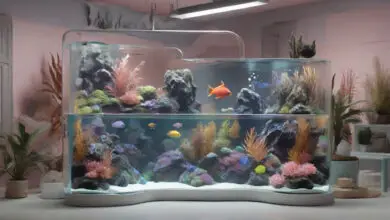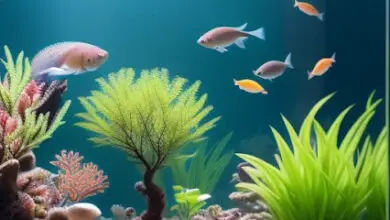How to Care for Sick Fish: Effective Quarantine Practices
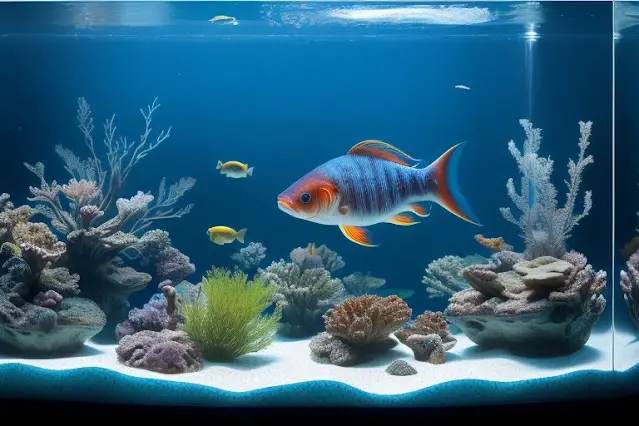
Keeping fish healthy in their aquarium home is important. But sometimes fish can get sick. When this happens, it’s best to separate them from others. This helps stop sick fish from spreading germs. It also lets you give them special care to feel better. This process is called quarantine.
In this story, I will tell you about the best ways to quarantine sick fish. I will share the supplies you will need and how to use them. I will also explain how to care for quarantined fish. Following these steps helps fish get strong again.
Setting Up a Quarantine Tank
The first thing you need is a separate small tank just for quarantined fish. This keeps them away from your main tank until they are better. You can use any clean spare tank or container with these supplies:
- Filter (hang on back or sponge is easy)
- Heater to keep water warm
- Air pump and air stone for oxygen
- Gravel vacuum and test kits
- Stresscoat water conditioner
- Salt or other medicines if needed
Make sure to wash everything with hot water before using in the quarantine tank. This kills germs the sick fish could spread.
Caring For Quarantined Fish
Keep these fish in the tank alone so they can rest. Feed them foods high in protein to help heal faster. Perform partial water changes twice a week. Change over 25% water each time:
- Scoop old water out with a cup near the bottom
- Replace with treated water that is the same temperature
- Add medicine, salt or nutrients as needed per directions
Test the water weekly and keep it clean. Watch the fish to see if it eats, swims normal and looks healthy again over 1-4 weeks. When it seems better, wait another week before moving it back with others.
Common Quarantine Scenarios
Here are some sick fish problems and the best treatment:
Cloudy Eyes
Sometimes fish get cloudy, grayish eyes that look like a film over them. This is usually from a bacteria infection. To treat it in quarantine:
- Add 1 teaspoon of aquarium salt per 5 gallons of water. The salt draws water from tissues and makes it hard for bacteria to live.
- Keep the fish isolated in the quarantine tank for 2-4 weeks while being treated. Perform regular partial water changes as usual.
- Watch the eyes each day – the cloudiness should start going away within a week as the fish gets better. If not improving after 2 weeks, you may need a stronger antibiotic medicine.
- When the eyes are clear for 3-4 days in a row with no return of cloudiness, the fish has likely fully recovered. Wait another week before returning it to the main tank.
Fin/Body Rot
This looks like fins tearing or melting away, holes in body, or slime coat loss. It’s caused by bacteria or fungus and can affect large areas quickly. Treatment is:
- Add an antibacterial medicine to the quarantine tank water, following dosage instructions carefully on the package.
- It may need to be dosed daily for 10-14 days to fully clear the infection. Continue partial water changes during treatment.
- Inspect the fish daily – rotted areas should stop spreading and start regrowing fins within a week with proper treatment.
- Keep treating the full recommended time even if it looks better sooner to fully eliminate the infection causing bacteria/fungus.
- After 2 weeks with no return or spread of rot, the fish is likely cured and can be returned when treatment ends.
Constipation
Sometimes fish become “backed up” and have trouble releasing their waste. This can be caused by not eating enough fiber, stress, or internal parasites. To help in quarantine:
- Add aquarium salt at 1 tsp per 5 gallons daily for 1-2 weeks. The salt softens stool and prevents reabsorption.
- Try giving daphnia or blanched vegetables like spinach or zucchini that are high in fiber 2-3 times a week. This helps things “move along.”
- You can also give the fish a warm salt bath weekly by floating it in tank water mixed with salt for 10-15 minutes. The warmth relaxes muscles to aid waste passing.
- Watch the belly area – a swollen, poofy look means constipation. This should go away within 1-2 weeks as waste clears with the right treatment.
- Return to main tank once normal sized stools are released and belly returns to a streamlined shape with no more buildup.
Parasites
Tiny bugs like ich or worms can infect fish. To clear parasites in quarantine:
- Carefully follow instructions for the chosen parasite treatment like “Ich-X” or Prazipro adding it to the quarantine tank water.
- Watch closely under a magnifying glass for spots, worms, or flakes on body and fins. These should disappear within 1-2 weeks as treatment works.
- You may need to repeat the treatment once more after 7-10 days as parasites can hide on surfaces. This ensures all life cycles are eliminated.
- Only return the fish if it stays bug-free for a full week after treatment ended. Returning too soon risks reinfecting the main tank.
Swim Bladder Issues
The swim bladder is like a balloon inside that helps fish float and dive. If it’s not working right, fish may tilt to one side or struggle to swim down/up. Causes can be constipation, injuries, or inflammation. Here’s what to do:
- Fast the fish for about 24 hours – not eating may allow stool to pass and ease pressure on the bladder.
- Offer frozen or blanched daphnia, peas or zucchini as the first meal when fasting ends. These soft foods can stimulate the bladder.
- Raise the water level in the quarantine tank if the fish floats at the top since it has trouble diving down.
- Check after a few days – if still swimming funny, an antibiotic may help if the bladder is infected. Seek advice from your local pet store.
- Most cases will improve on their own with fasting and lighter diet. It just takes time for the bladder to heal itself.
- Return to the main tank once normal swimming returns and remains stable, meaning the bladder problem likely resolved without permanent damage.
Monitoring quarantined fish closely is important. With clean water, salt, special foods and drugs if needed, most common issues can get better given time. Proper quarantine saves sick fish and also protects healthy ones from infections.
Some other things I’ve seen fish become sick from include wounds, missing scales or fins, and odd lumps or bumps appearing on the body. Here are some tips on caring for fish with these kinds of problems in quarantine:
Wounds
If a fish has an open sore or cut, it’s important to prevent infection. Gently clean around the wound daily with tank water and an aquarium-safe antiseptic like Melafix to keep it clean. Fasting the fish for a day or two allows energy to go to healing. Watch for the wound closing up within 1-2 weeks.
Missing Scales or Fins
These injuries might be from fights with tankmates, poor water quality, or other causes. Perform regular water changes and add aquarium salt at 1 tsp per 5 gallons for its healing properties. Extra aeration helps too. New scales and fin regrowth may take 3 weeks with proper care.
Lumps and Bumps
Unsure lumps could be cysts, tumors, or injuries and require vet identification. Isolate the fish and do daily water changes. An antibiotic may help if caused by bacteria under the skin. Seek advice if lumps get bigger as some conditions need treatment. Monitor closely for any changes with quarantine care.
Older Fish Decline
As fish age, their health can slip even without obvious sickness. Give extra TLC with vitamin-enriched foods, low-stress environment and clean warm water. Watch closely but try not to overmedicate – sometimes quality time is best. Extra care and rest may boost an elderly friend’s comfort.
I hope these give a better idea of how to handle different types of fish ailments with quarantine. Proper treatment often just takes time, clean water and selective nutrition. Don’t hesitate to reach out with any other questions!
